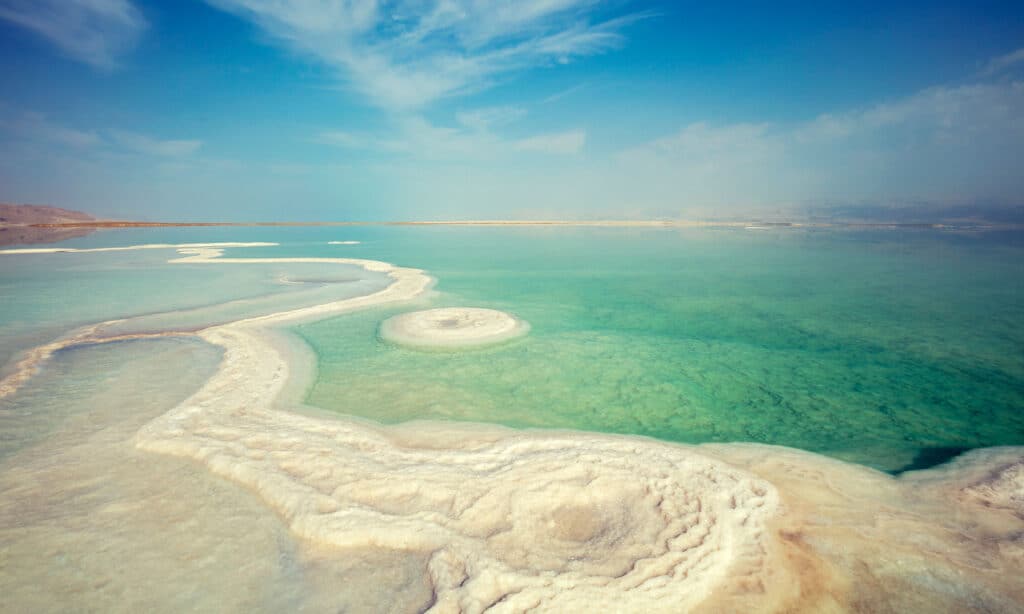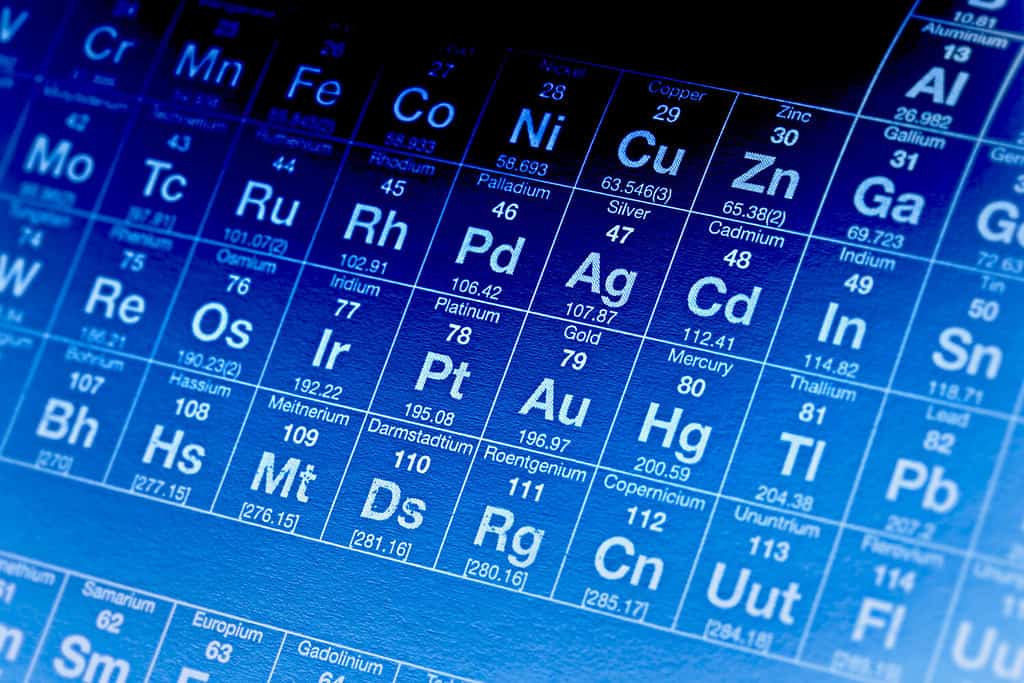Earth is made up of mostly eight elements in various abundance. These elements make up the ground we stand on, the mountain terrain, and the inner layers of the planet. The chemical composition of the Earth is unique. Along with the atmosphere, it allows for so many forms of life to thrive. Here you’ll learn about the most abundant elements on Earth and what each element contributes to the planet.
The Composition of Earth’s Core, Mantle, and Crust
The solid composition of Earth refers to the core, mantle, and crust. The atmosphere, while also having layers, refers to gaseous components and does not share the same composition as solid Earth.
1. Oxygen

One of the most abundant and reactive elements in the universe is oxygen.
©assistant/Shutterstock.com
Oxygen is not a solid like most of the abundant elements found on Earth. It is a highly reactive gaseous element. This means it is always available and ready to pair with other elements, often changing their reactivity and form. Surprisingly, many rocks are full of oxygen. The percentage, by weight, of oxygen on solid earth is 46.6%.
2. Silicon

Sand is mostly silicon dioxide. In its pure form, silicon dioxide is quartz.
©ekipaj/iStock via Getty Images
Silicon is mostly found bound to other elements, like oxygen. It’s a solid, non-metal element. These silicate minerals make up a large portion of the rocks on Earth and in turn, make up around 27.7% of the abundance of elements on Earth. Sand, quartz, sandstone, and granite are a few examples wherein silicon materials make up a majority of their composition.
3. Aluminum

Aluminum combines easily with silicon, copper, and magnesium.
©HT Ganzo/iStock via Getty Images
This soft, shiny metal is the most abundant metal in the Earth’s composition. Aluminum silicates are also very common and are a combination of aluminum and silicon dioxide. These compounds are usually found in clay and rocks. Aluminum and its combinations make up 8.1% of the elements found on solid Earth.
4. Iron

Iron is commonly used for bridge building, but steel is becoming a more prominent alternative.
©Kenneth Keifer/Shutterstock.com
This metal is very stable under reactions but is still able to bind with other elements. Iron is the main component of the Earth’s core and a large portion of the mantle. When iron reacts with water, it creates rust. Iron also has magnetic properties which contributes to Earth’s magnetic field. Despite iron being an abundant element within the core and mantle, it is only around 5.0% by weight of the elements making up Earth.
5. Calcium

Limestone is mostly calcium carbonate and is a principal feature of caves.
©zmijuchka/Shutterstock.com
Calcium is a soft metal that contributes to only 3.6% of the elements abundant on Earth. The main form found in nature, as calcium uncombined is very uncommon, is calcium carbonate. Calcium carbonate consists of calcium, carbon, and oxygen. Then, with the combination of these elements, a sedimentary rock called limestone forms. Limestone erodes from persistent exposure to rainwater and eventually, caves are formed.
6. Sodium

The Dead Sea has about 10 times the amount of salt compared to other sources of seawater.
©iStock.com/vvvita
Most commonly associated with salt, sodium is a soft metal composing 2.8% of the solid earth’s elemental abundance. Sodium is very reactive to air and water. Then, when it is combined with chlorine, salt is the product. The main source you’ll find sodium in is seawater, though it’s also a component of other minerals found throughout the Earth.
7. Potassium

Bananas are one of the first foods that come to mind when someone thinks of potassium.
©asss sssa/Shutterstock.com
Potassium is another very reactive metal that is ready to combine with other elements in nature to create different minerals. It makes up an estimated 2.6% of the solid composition of Earth. Additionally, potassium commonly reacts with oxygen and water to form two separate compounds. On Earth, these compounds are naturally found in water and minerals. Its presence in water is from the weathering of minerals like sylvite and feldspars which run off into bodies of water.
8. Magnesium

Chlorophyll and magnesium are very important parts of our world and its functions.
©AVRORRA/Shutterstock.com
Magnesium is not the most abundant element, coming in at 2.1% of the total abundant elements present on the Earth, by weight. Its presence is mostly in combination with other elements, like calcium and oxygen. Magnesium is especially important for plants. Chlorophyll, the pigment responsible for capturing sunlight, requires magnesium to function. Therefore, if magnesium wasn’t present, plants wouldn’t be able to photosynthesize. A very different existence (or lack thereof) would be the reality for Earth’s inhabitants.
9. Everything Else

Most elements present on the periodic table are naturally occurring on the Earth.
©isak55/Shutterstock.com
There are trace amounts of tons of other elements present in the Earth. Carbon, manganese, titanium, and hydrogen are just a few of these trace elements, in no particular order. These unabundant elements are still vital to the overall health of the earth and the environment it creates. Trace elements present in the soil help plants perform exactly as they need to feed other members of the food chain. Despite these elements being small in percentage, they are important in the grand scheme of the Earth and its inhabitants.
The Composition of the Atmosphere
The air we breathe is just as important as the land we stand on, and their compositions are quite different. The atmosphere is gaseous, so you’re not going to find metals like iron or calcium making up a great part of it. The Earth’s atmosphere is abundant in the elements oxygen and nitrogen. In fact, the atmosphere on Earth is 78% nitrogen, with 21% oxygen and 1% that contains some other compounds, like carbon dioxide. However, it wasn’t always this ideal mix of nitrogen and oxygen.
First, well before humans existed, there wasn’t any percentage of oxygen present in the atmosphere. It was mostly hydrogen and helium. Then, volcanic eruptions occurring during the movement of the earth’s crust caused the atmosphere to change again. With this change, water, carbon dioxide, and ammonia became the main components of the atmosphere. Finally, thanks to plant and algae activity, we have a balanced atmospheric composition that can sustain human, animal, and plant life very well.
The photo featured at the top of this post is © AlexLMX/iStock via Getty Images
Thank you for reading! Have some feedback for us? Contact the AZ Animals editorial team.







